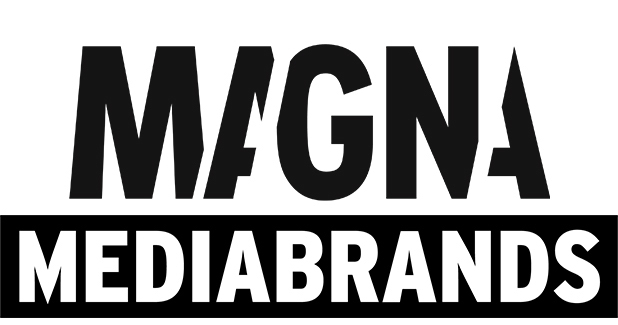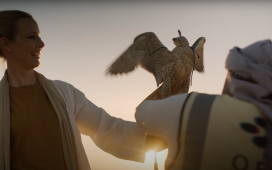KEY FINDINGS
- Global advertising spending will grow by $78bn in 2021 (+14 per cent) to $657 billion, a new all-time high, following a decline of -2.5 per cent in 2020. The marketplace will continue to grow in 2022 (+7 per cent).
- Advertising activity is fueled by (1) economic recovery (global GDP +6.4 per cent) benefitting key ad-spending verticals severely hit by Covid-19 last year (automotive, travel, entertainment, restaurants), (2) stronger-than-ever organic drivers to digital marketing, and (3) international sports events (Tokyo Olympics, UEFA Euro).
- Digital ad formats capture most of the growth with ad sales up +20 per cent to $419bn, 64 per cent of total ad sales.
- Linear ad sales are slower to recover but will stabilize full-year (+3 per cent to $238bn).
- All 70 ad markets monitored will expand again this year with China (+16 per cent) and the UK (+17 per cent) among the largest increases.
- The US market will grow by $34bn (+15 per cent, strongest growth rate in 40 years) to reach $259 billion, with digital ad sales up +20 per cent and non-political linear ad sales up +4 per cent.
- Linear ad sales still represent the bulk of ad revenues for traditional media owners and their continued stagnation will trigger a wave of consolidation in the media industry, aimed at competing with digital media players.
Vincent Létang, EVP, global market research at MAGNA and author of the report said: “As economic recovery is stronger and faster than anticipated in several of the world’s largest ad markets (US, UK and China, in particular) and consumption accelerates, brands need to reconnect with consumers. At the same time, the acceleration in ecommerce and digital marketing adoption that started during Covid, continues full speed into 2021, fueling digital advertising spending from consumer brands as well as small and DTC businesses. This unique combination of cyclical, organic and structural drivers will lead to the strongest advertising annual growth ever monitored by MAGNA: +14 per cent globally (+15 per cent in the US).”
GLOBAL AD MARKET: +14 per cent TO $657 BILLION
As the economy recovers faster than expected globally (GDP +6 per cent) and in most markets, so do marketing activity and advertising spending. With the added driver of rescheduled international sports events, MAGNA forecasts global all-media advertising spending to grow by $78bn (+14 per cent) to $657bn in 2021, a new all-time high. MAGNA also raises its forecast for advertising market growth in 2022 to +6.6 per cent (previously +5 per cent). The +14 per cent growth expectation for 2021 would represent the highest growth rate on record, beating +12.5 per cent in 2000, and a significant increase from MAGNA’s previous global forecast (Dec. 2020: +8 per cent).
Economic recovery will lift all boats, but the contrast has never been wider between digital ad sales accelerating (+20 per cent to $419bn) and linear ad sales (linear TV, linear radio, print, OOH, cinema) which are barely stabilizing (+3 per cent to $238bn after 2020’s -18 per cent decline). Covid may be receding in most markets but the changes to lifestyles, media consumption and business models continue to fuel an acceleration in the adoption of digital marketing from both national consumer brands and small, local and “direct” businesses. Digital growth from consumer brands comes partly at the expense of traditional linear channels but in the case of small businesses (that represent the bulk of search and social ad spend), it is mostly incremental to the advertising pie.
All of the 70 ad markets monitored by MAGNA will grow to some degree in 2021 and 2022. In 2021, Asia Pacific ad markets will grow by +13 per cent, EMEA markets by +12 per cent. Latin America and North America will both grow by nearly +15 per cent. Everywhere, the pattern is similar, with linear ad sales to grow by low- to mid-single digits and digital ad sales growing by +20 per cent or more. The United States remains the largest market and will increase by +15 per cent in 2021, and will still remain ahead of China (+16 per cent), Japan (+9 per cent), the United Kingdom (+17 per cent) and Germany (+11 per cent) among the top five markets.
Nearly all digital ad formats will grow by double-digits in 2021 as total digital ad sales will account for 64 per cent of global all-media ad spend. They will reach two-thirds of all advertising sales in 2022. The explosion of e-commerce will boost search by +20 per cent to $200 billion while growing marketing adoption and media consumption will drive social media by +26 per cent to $119 billion. Video ads will grow by +24 per cent to $57 billion as short-form, long-form AVOD and OTT ad spend are all fueled by increased reach and viewing. Out-stream video and static banners may grow at a more subdued pace (single-digits) due to the increasing limitations to tracking and targeting on websites (on Safari and soon Chrome) and apps (on iOS14).
Among linear ad formats, MAGNA expects linear television ad sales to recover as consumer brands (e.g. automotive, drinks) compete for returning consumers in a brand-safe environment. Advertiser demand will drive CPM inflation (average +8 per cent) which offsets eroding ratings. In addition, international sports events bring additional ad budgets: Global TV ad sales will thus grow by +3 per cent to $153 billion. Radio and out-of-home media will benefit from businesses re-opening in several key verticals (e.g. automotive, retail, entertainment) as well as a gradual return to consumer mobility that will restore their audiences; ad sales will increase by +5 per cent and +10 per cent respectively. Print ad sales will not quite stabilize as the return of key verticals (fashion, beauty, travel) will not offset the continued decline in circulation and ad pages. Newspaper and magazine ad sales will decrease by -4 per cent and -5 per cent respectively.
The scale reached by digital media owners and the stagnation of linear ad spend is forcing traditional media owners to consolidate to compete more effectively and invest in cross-media technology. MAGNA believes the spring announcements in the US (Warner/Discovery) and in France (TF1/M6 with a combined market share of 85 per cent) are just the beginning of a new wave of mergers and acquisitions globally.
MEA: REGIONAL OVERVIEW
Markets monitored: six Gulf countries incl. KSA, plus Egypt, Lebanon, Morocco, South Africa. Note: Turkey is part of CEE.
Key Findings:
- Linear advertising sales will rise by +4 per cent across the region to reach $8 million, around $1 million below 2019 levels.
- Digital formats continued to grow organically in 2020, rising by +8 per cent and will accelerate in 2021: +19 per cent.
- The total advertising market (linear+digital) will grow by +9 per cent in 2021 to reach $12.9 billion.
- Economic stabilization and the return of major events (Dubai World Expo 2021, FIFA World Cup Qatar 2022) will support marketing and advertising recovery over the next two years.
Recovery is expected this year after the coronavirus crisis brought public transportation, automotive mobility and global trade to a standstill for months, triggering a collapse of global demand and energy prices that hurt the GCC economies and caused a steep decline in advertising sales. Assuming continued global recovery and energy price recovery, 2021 will bring renewed marketing activity across the region, driving net advertising revenues to rise by +9 per cent to reach $12.9 billion, slightly above the 2019 peak of $12.8 billion. The strongest growth will come from several of the markets that were hit the hardest in 2020, including Saudi Arabia (2021: +12 per cent, 2020: -9 per cent), Qatar (2021: +10 per cent, 2020: -9 per cent), and the UAE (2021: +10 per cent, 2020: -9 per cent). Egypt remains the largest MEA market in terms of total ad dollars, with $3.8 billion expected for the full year in 2021, followed by South Africa ($2.5 billion), Saudi Arabia ($2.1 billion), and the UAE ($1.9 billion).
Linear media format sales will rise by +4 per cent across the region to $8 billion, still $1 billion below the 2019 peak of $9.1 billion. Television remains a crucial part of the media mix in most MEA markets, with a little less than half of all ad dollars (and much more in the case of consumer brands) being spent on TV. Total television spend will rise +5 per cent to reach $5.9 billion this year. In the GCC, and to a lesser extent in Egypt, Morocco, and Lebanon, Pan Arab television networks like MBC and Rotana remain immensely popular, drawing large audiences and attracting around 90 per cent of total television spend. Pan Arab channels offer a wider variety of high-quality programming (including regional and international shows and sports) than the local channels, which are mostly government-owned and subject to restrictive guidelines on programming and advertising. Pan Arab television should see a faster recovery this year, +5 per cent, compared to free TV (+4 per cent).
Digital advertising formats will see 2021 growth of +19 per cent to top $4.8 billion, nearly 40 per cent regional advertising (still well below global average of nearly 65 per cent). Video (+30 per cent) and social ad formats (+26 per cent) will see the strongest growth, driven by organic factors (acceleration of digital media consumption and e-commerce). MAGNA anticipates digital sales will see continued strength in 2022, rising another +17 per cent to reach over 40 per cent market share. Over the long term, digital ad sales will continue to grow by an average of +15 per cent per year to reach $8.6 billion by 2025, half of the total regional advertising revenues.
US AD MARKET: +15 per cent TO $259 BILLION
In the US, media companies’ net advertising revenues (NAR) will reach a new all-time high of $259 billion in 2021. That will be an increase of $34 billion (+15 per cent) over 2020. The +15 per cent growth will mostly be driven by digital advertising acceleration (+24 per cent) while linear ad sales will only show modest growth (+4 per cent excluding political). The new growth forecast represents the strongest acceleration in 40 years and stands nine percentage points above the previous MAGNA forecast (published March 2021). The upward revision comes from a better-than-expected start of the year and an increasingly strong economic outlook for the coming months: For example, the International Monetary Fund (IMF) recently increased its full-year, real GDP forecast to +6.4 per cent. Marketing activity and advertising spending will be fueled by strong consumption, a fast-recovering job market, the reopening of many businesses (restaurants, theatres, amusement parks…) and the return of normal events and sports schedules, plus the Olympics.
Following a strong 1Q21 (+16 per cent, driven by huge digital growth), MAGNA expects second-quarter ad sales to grow by at least +35 per cent year-over-year (YOY), against a historically low quarter in 2Q20 (-17 per cent). Strong YOY growth will continue in 3Q21: +13 per cent with $900m of incremental ad spend generated around the Tokyo Olympics. Growth will slow down to +4 per cent in 4Q21, which compares against a strong quarter in 4Q20 that was boosted by record political spending and a robust holiday season.
Digital advertising sales will grow by +24 per cent to reach $179bn, to approach 70 per cent of total ad sales. Unlike linear media, the digital market quickly rebounded from its lows in the second quarter of 2020, and it has been red hot ever since. First-quarter digital ad sales were up +35 per cent YOY and the second quarter is expected to grow by at least +40 per cent YOY.
Within digital media, social, video and search will drive growth. Both social media and digital video will grow +28 per cent this year, while search will gain +23 per cent. Video will be driven by the short-form segment, as both YouTube and Twitch continue to report strong results, and the long-form segment, as the proliferation of AVOD platforms in 2020 (Peacock, Paramount+, etc.) demonstrate, will capture dollars lost in linear TV. Digital audio will also grow in 2021 (+17 per cent) as consumption and marketing usage in podcasts continues to increase rapidly.
Non-political linear advertising sales (linear TV, radio, print, out-of-home and cinema) will increase by +4 per cent to $81 billion, but due to the lack of political spend this year, total linear ad sales (including political) will be merely stable. Linear ad spend has been slow to recover in 1Q21 and ad sales were still down vs 2020 (-11 per cent YOY), but more easily, the return of sports, and consumer mobility will help stabilize the market in the next three quarters. Within linear media, out of home will show the highest growth, +11 per cent over 2020, following a heavy decline in 2020 (-25 per cent) and in 1Q21 (-28 per cent), as mobility recovers and advertising spending comes back from entertainment, retail and travel (all among top 5 spending verticals). Local TV will benefit from the recovery of its No. 1 industry vertical, automotive (Jan-April car sales up 29 per cent), driving non-political ad sales by +10 per cent. Radio ad sales will increase by +7 per cent to $10bn, thanks to automotive and entertainment verticals (both in the Top 4 radio verticals). Print is the only linear ad format that will not grow again in 2021 (-14 per cent), though national newspapers and magazines will fare better than their local counterparts. National TV ad sales will grow by 5 per cent to $38 billion helped by stronger pricing and incremental spending around the Tokyo Olympics.
Traditional media owners’ cross-platform ad sales (linear+digital) will grow by +5 per cent in 2021, with total television ad revenues up +6 per cent (including long-form AVOD +25 per cent) and audio ad sales up +10 per cent (including audio streaming and podcasting up +35 per cent). The digital ad sales of newspaper and magazine publishers, which now stand at half of total publishing ad sales, will grow further this year (+14 per cent) but not enough to offset the continuing decline of print ad sales (total ad revenues -14 per cent).
In 2022, MAGNA expects the US advertising market to grow by +8 per cent to reach $280bn, thanks to continued economic growth (GDP growth between +3.5 per cent and +4.3 per cent) and more cyclical drivers (Winter Olympics in 1Q22, mid-term elections in 4Q22). Marketing and advertising activity will also benefit from a full year of an open economy compared to 2021, when the first quarter was still partly hampered by COVID. This is a two-percentage-point upward revision from MAGNA’s previous report in March.
MAGNA believes the recent merger announcement between Warner Media and Discovery is the first of a new wave of consolidations to come in the media industry. Facing stagnation in linear media consumption and linear ad sales that are still the bulk of their business revenues, traditional media companies have no choice but to grow in scale, in order to compete with digital media giants, and invest in cross-platform advertising solutions. Traditional media owners are moving now as they believe antitrust authorities are ready to consider market shares in the broader media market and thus approve horizontal consolidations that would have been unthinkable just five years ago. The US TV market remains relatively fragmented following the merger of Warner and Discovery: The top three TV ad vendors (currently NBC, ViacomCBS and Warner/Discovery) will control just 60 per cent of the US TV advertising market, compared to 90 per cent+ for the top three broadcasters in most other advanced markets. Moreover, they will control only 15 per cent of the broader, cross-platform ad market compared to 30 per cent for Google or 16 per cent for Facebook. Media consolidation is global, and international markets remain a step ahead as the top two French broadcasters (combined market share 90 per cent) just announced their own merger plans.
TABLE 1: GLOBAL NET AD REVENUES (NEW GROWTH FORECASTS)
| KEY MARKETS | 2020 | 2021 | 2022 |
| WORLD | -2.6 per cent | 13.5 per cent | 6.6 per cent |
| NORTH AMERICA | 0.2 per cent | 14.9 per cent | 7.9 per cent |
| LATIN AMERICA | -11.5 per cent | 14.8 per cent | 5.8 per cent |
| WESTERN EUROPE | -5.0 per cent | 12.4 per cent | 5.9 per cent |
| CENTRAL & EASTERN EUROPE | -3.4 per cent | 11.6 per cent | 5.1 per cent |
| EMEA | -5.0 per cent | 12.0 per cent | 5.9 per cent |
| APAC | -3.3 per cent | 12.8 per cent | 5.5 per cent |
| AUSTRALIA | -5.1 per cent | 11.4 per cent | 2.9 per cent |
| BRAZIL | -6.8 per cent | 15.2 per cent | 6.9 per cent |
| CANADA | -5.8 per cent | 11.4 per cent | 5.7 per cent |
| CHINA | 2.6 per cent | 16.1 per cent | 5.9 per cent |
| FRANCE | -6.0 per cent | 13.1 per cent | 7.2 per cent |
| GERMANY | -3.7 per cent | 10.9 per cent | 5.0 per cent |
| INDIA | -22.8 per cent | 11.0 per cent | 13.6 per cent |
| ITALY | -10.4 per cent | 7.7 per cent | 4.0 per cent |
| JAPAN | -6.0 per cent | 8.8 per cent | 4.9 per cent |
| RUSSIA | -1.8 per cent | 11.6 per cent | 4.9 per cent |
| SPAIN | -10.7 per cent | 15.2 per cent | 7.5 per cent |
| UNITED KINGDOM | -2.6 per cent | 16.8 per cent | 8.0 per cent |
| USA (EXCL. CE) | -1.7 per cent | 17.4 per cent | 6.5 per cent |
| USA (INCL. CE) | 0.5 per cent | 15.1 per cent | 8.0 per cent |
Source: MAGNA, June 2021
TABLE 2: NET AD REVENUES IN KEY MARKETS (NEW vs OLD FORECAST)
| 2021 Growth | Fall 2020 | Spring 2021 | Change |
| World (all media) | 7.6 per cent | 13.5 per cent | 5.9 per cent |
| North America | 4.2 per cent | 14.9 per cent | 10.8 per cent |
| Latin America | 8.3 per cent | 14.8 per cent | 6.6 per cent |
| Western Europe | 9.1 per cent | 12.4 per cent | 3.3 per cent |
| Central and Eastern Europe | 9.5 per cent | 11.6 per cent | 2.1 per cent |
| Emerging | 11.2 per cent | 14.4 per cent | 3.2 per cent |
| Developed | 6.4 per cent | 13.2 per cent | 6.9 per cent |
| Europe, Middle East, Africa | 8.9 per cent | 12.0 per cent | 3.1 per cent |
| Asia Pacific | 11.1 per cent | 12.8 per cent | 1.7 per cent |
| Total Linear | 3.5 per cent | 3.1 per cent | -0.4 per cent |
| Total Digital | 10.4 per cent | 20.4 per cent | 10.0 per cent |
Source: MAGNA, June 2021
TABLE 3: NET ADVERTISING REVENUES – US MARKET
| AD FORMATS | 2020 | 2021 | 2022 |
| DIGITAL AD REVENUES | 13.3 per cent | 23.5 per cent | 11.1 per cent |
| Search | 11.6 per cent | 23.2 per cent | 11.4 per cent |
| Online Video | 23.5 per cent | 28.1 per cent | 15.8 per cent |
| Social Media | 21.4 per cent | 28.3 per cent | 12.6 per cent |
| Mobile | 20.4 per cent | 16.1 per cent | 15.2 per cent |
| LINEAR AD REVENUES (incl. CE) | -16.4 per cent | -0.1 per cent | 1.2 per cent |
| National TV (incl. CE) | -11.8 per cent | 5.1 per cent | -3.7 per cent |
| National TV (excl. CE) | -12.3 per cent | 3.6 per cent | -3.6 per cent |
| Local TV (incl. CE) | 0.8 per cent | -11.0 per cent | 15.1 per cent |
| Local TV (excl. CE) | -18.7 per cent | 9.9 per cent | -4.4 per cent |
| -31.6 per cent | -13.9 per cent | -16.7 per cent | |
| Radio | -31.0 per cent | 6.0 per cent | 3.6 per cent |
| Out-of-home | -24.6 per cent | 10.4 per cent | 8.2 per cent |
| Cinema | -79.9 per cent | 135.9 per cent | 50.0 per cent |
| Direct Mail | -13.6 per cent | -4.0 per cent | -0.7 per cent |
| GRAND TOTAL (incl. CE) | 0.5 per cent | 15.1 per cent | 8.0 per cent |
| GRAND TOTAL (excl. CE) | -1.7 per cent | 17.4 per cent | 6.5 per cent |
CE= cyclical events (US elections, Olympics) Source: MAGNA, June 2021
ABOUT THE RESEARCH
MAGNA research is media-centric. It monitors net media owners advertising revenues based on a bottom-up analysis of financial reports and data from media trade organizations; other ad market studies are based on tracking ad insertions or consolidating agency billings. The MAGNA approach provides the most accurate and comprehensive picture of the market as it captures total net media owners’ ad revenues coming from national consumer brands’ spending as well as small, local, “direct” advertisers. Forecasts are based on the economic outlook and market shares dynamic. The full report contains more granular media breakdowns and forecasts to 2025, for 70 markets.
ABOUT MAGNA
MAGNA has set the industry standard for more than 60 years by predicting the future of media value. It publishes more than 40 reports per year on audience trends, media spend and market demand as well as ad effectiveness.
MAGNA operates across five key competencies, supporting clients and cross-functional teams through partnership, education, accountability, connectivity and enablement. For more information, visit: https://magnaglobal.com/
To access full reports and databases or to learn more about our market research services, contact [email protected]










